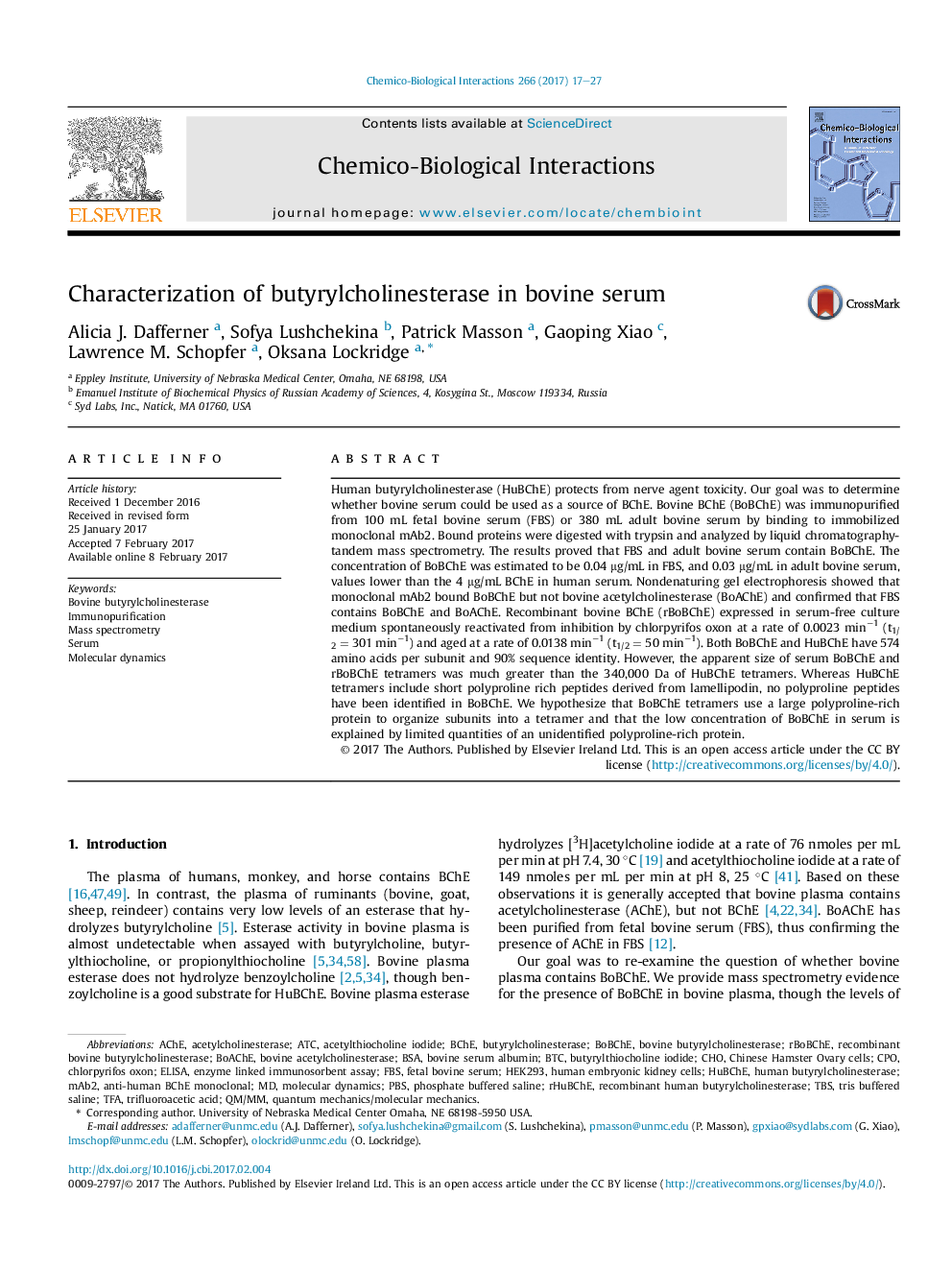| Article ID | Journal | Published Year | Pages | File Type |
|---|---|---|---|---|
| 5559416 | Chemico-Biological Interactions | 2017 | 11 Pages |
â¢Bovine serum contains very low quantities of butyrylcholinesterase (BChE).â¢Fetal bovine serum has 10 times more BChE than adult bovine serum.â¢Bovine BChE tetramers are much larger than 340 kDa.â¢Bovine BChE inhibited by chlorpyrifos oxon spontaneously reactivates.â¢Monoclonal mAb2 immunopurifies bovine BChE.
Human butyrylcholinesterase (HuBChE) protects from nerve agent toxicity. Our goal was to determine whether bovine serum could be used as a source of BChE. Bovine BChE (BoBChE) was immunopurified from 100 mL fetal bovine serum (FBS) or 380 mL adult bovine serum by binding to immobilized monoclonal mAb2. Bound proteins were digested with trypsin and analyzed by liquid chromatography-tandem mass spectrometry. The results proved that FBS and adult bovine serum contain BoBChE. The concentration of BoBChE was estimated to be 0.04 μg/mL in FBS, and 0.03 μg/mL in adult bovine serum, values lower than the 4 μg/mL BChE in human serum. Nondenaturing gel electrophoresis showed that monoclonal mAb2 bound BoBChE but not bovine acetylcholinesterase (BoAChE) and confirmed that FBS contains BoBChE and BoAChE. Recombinant bovine BChE (rBoBChE) expressed in serum-free culture medium spontaneously reactivated from inhibition by chlorpyrifos oxon at a rate of 0.0023 minâ1 (t1/2 = 301 minâ1) and aged at a rate of 0.0138 minâ1 (t1/2 = 50 minâ1). Both BoBChE and HuBChE have 574 amino acids per subunit and 90% sequence identity. However, the apparent size of serum BoBChE and rBoBChE tetramers was much greater than the 340,000 Da of HuBChE tetramers. Whereas HuBChE tetramers include short polyproline rich peptides derived from lamellipodin, no polyproline peptides have been identified in BoBChE. We hypothesize that BoBChE tetramers use a large polyproline-rich protein to organize subunits into a tetramer and that the low concentration of BoBChE in serum is explained by limited quantities of an unidentified polyproline-rich protein.
Graphical abstractDownload high-res image (123KB)Download full-size image
